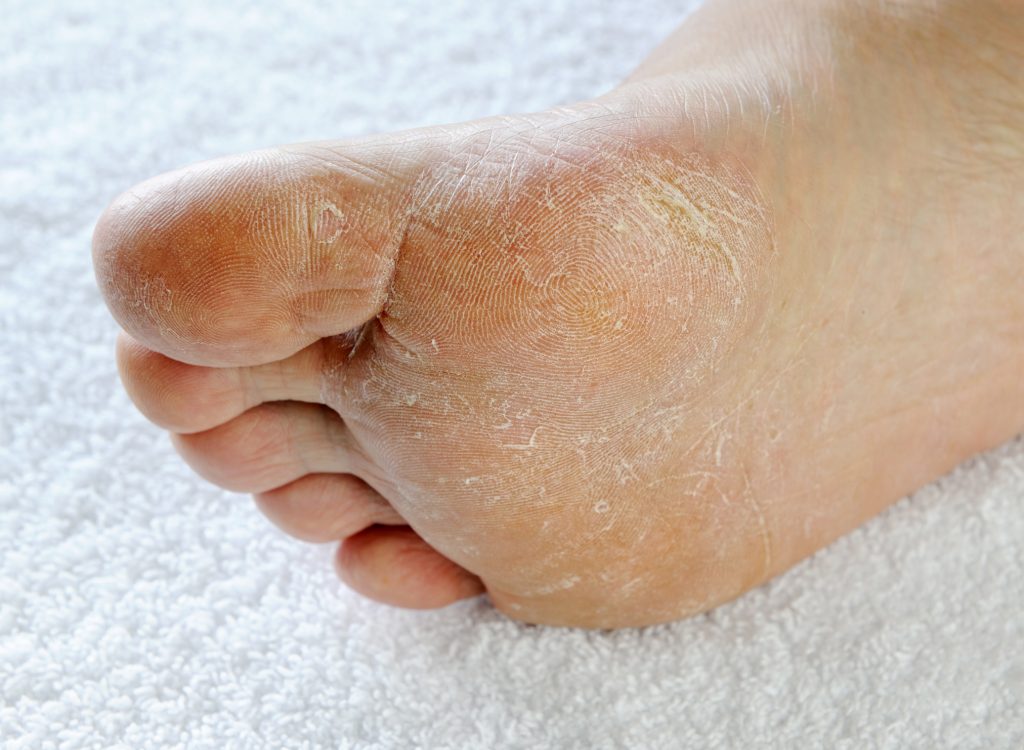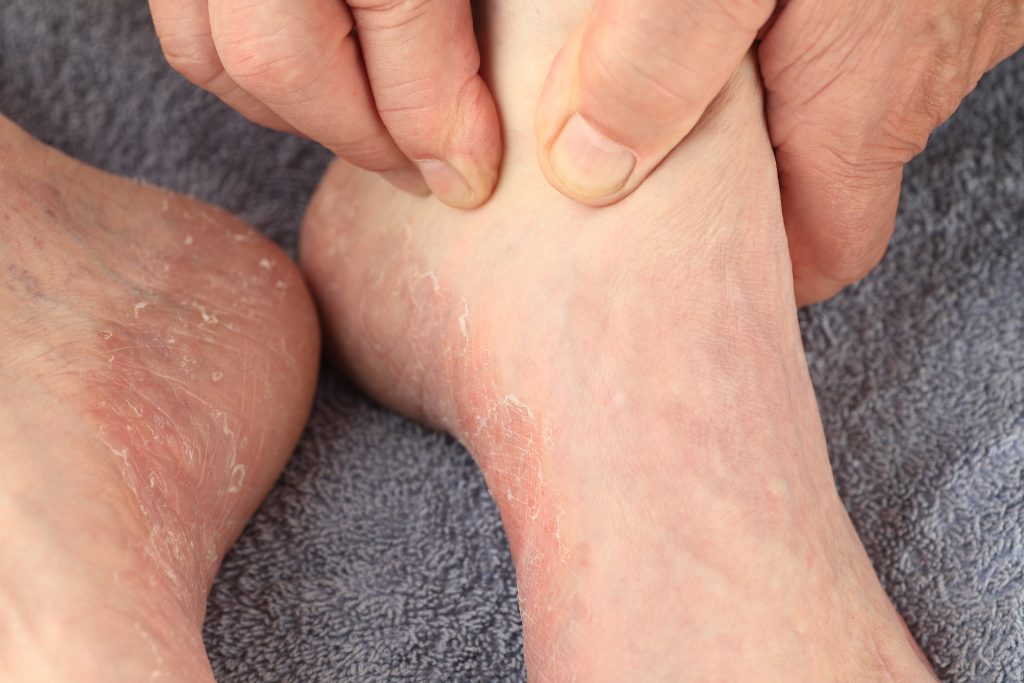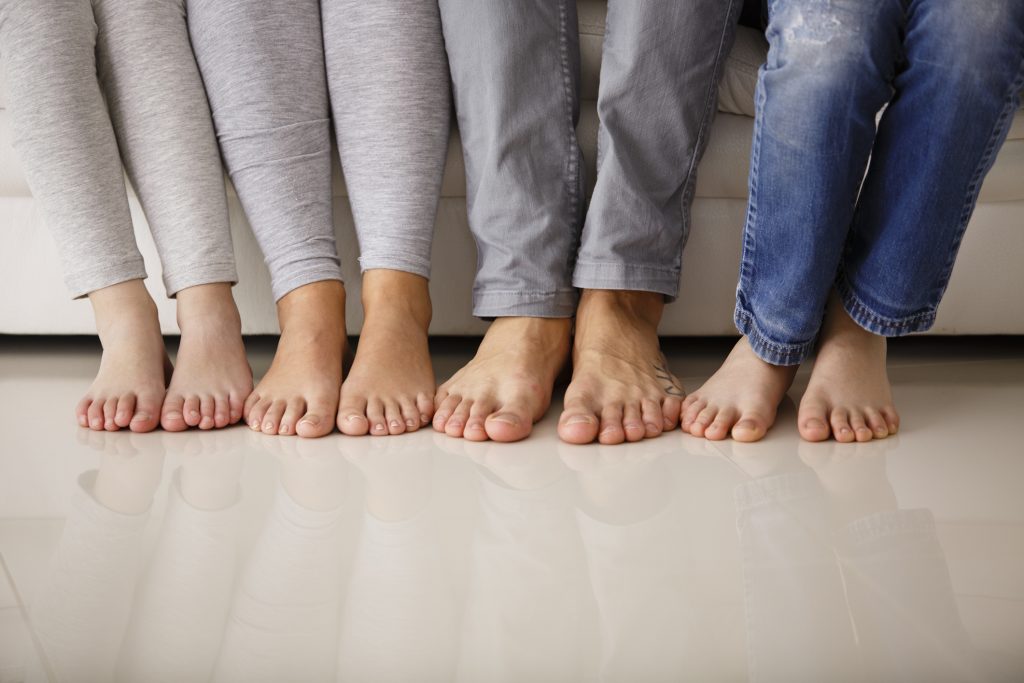Athlete's Foot Treatments from U.S. Dermatology Partners
What Is Athlete’s Foot?
Athlete’s Foot earned its name because this contagious fungal infection is commonly seen in athletes, who may wear sweaty socks for long periods of activity. It affects the skin on the feet and, left untreated, can spread to toenails and even to your hands.
Related: 5 Common Foot Rashes

Skin affected by athlete’s foot appears crusty or scaly and is likely to itch.
Find This Service Near You
Who Is at Risk for Athlete’s Foot?
People of all ages can get athlete’s foot, but you are more likely to get the condition if you walk barefoot in public places such as showers, swimming pools and locker rooms. Keeping your feet wet for an extended period of time, or having sweaty feet, also increases the likelihood of getting athlete’s foot.
Athlete’s Foot Symptoms

Dry, peeling, itchy skin on the feet is a typical symptom of athlete’s foot.
There is usually more than one symptom of athlete’s foot, but it often begins with an itching, stinging or burning sensation between the toes and on the sole of your feet. Other indications of athlete’s foot can include:
- Discolored, thick or crumbly toenails
- Raw skin on the feet
- Cracking and peeling skin on the feet
- Dry skin on either the soles or sides of the feet
In addition, your toenails may begin pulling away from the nail bed if infected. While athlete’s foot may begin as a minor nuisance, severe cases can cause a great deal of discomfort.
Athlete’s Foot Treatments
Fortunately, there are many successful ways to stop athlete’s foot in its early stages with over-the-counter medications. If the condition continues, however, you will want to see a dermatologist and consider and consider prescription options.
Prescription treatments for athlete’s foot can include topical steroid creams, oral antifungal medications, oral antibiotics (if a bacterial infection is present) and prescription-strength versions of miconazole (Desenex) and clotrimazole (Lotrimin AF).
Athlete’s Foot Prevention

To help prevent athlete’s foot, don’t keep your feet in wet socks and spend some time of the day barefoot.
Athlete’s foot is very preventable and usually can be avoided just by making a few lifestyle changes. Washing your feet daily, and drying them thoroughly, is a great place to start. You can also use antifungal powder before putting on socks, and look for socks made of cotton or wool that allow your feet to “breathe.” Socks made specifically for wicking moisture away from the skin will also help.
At the end of the day, give your feet a break and spend some time going barefoot. And, if your shoes or socks get wet, switch to another pair as quickly as possible.
*Results may vary by individual
